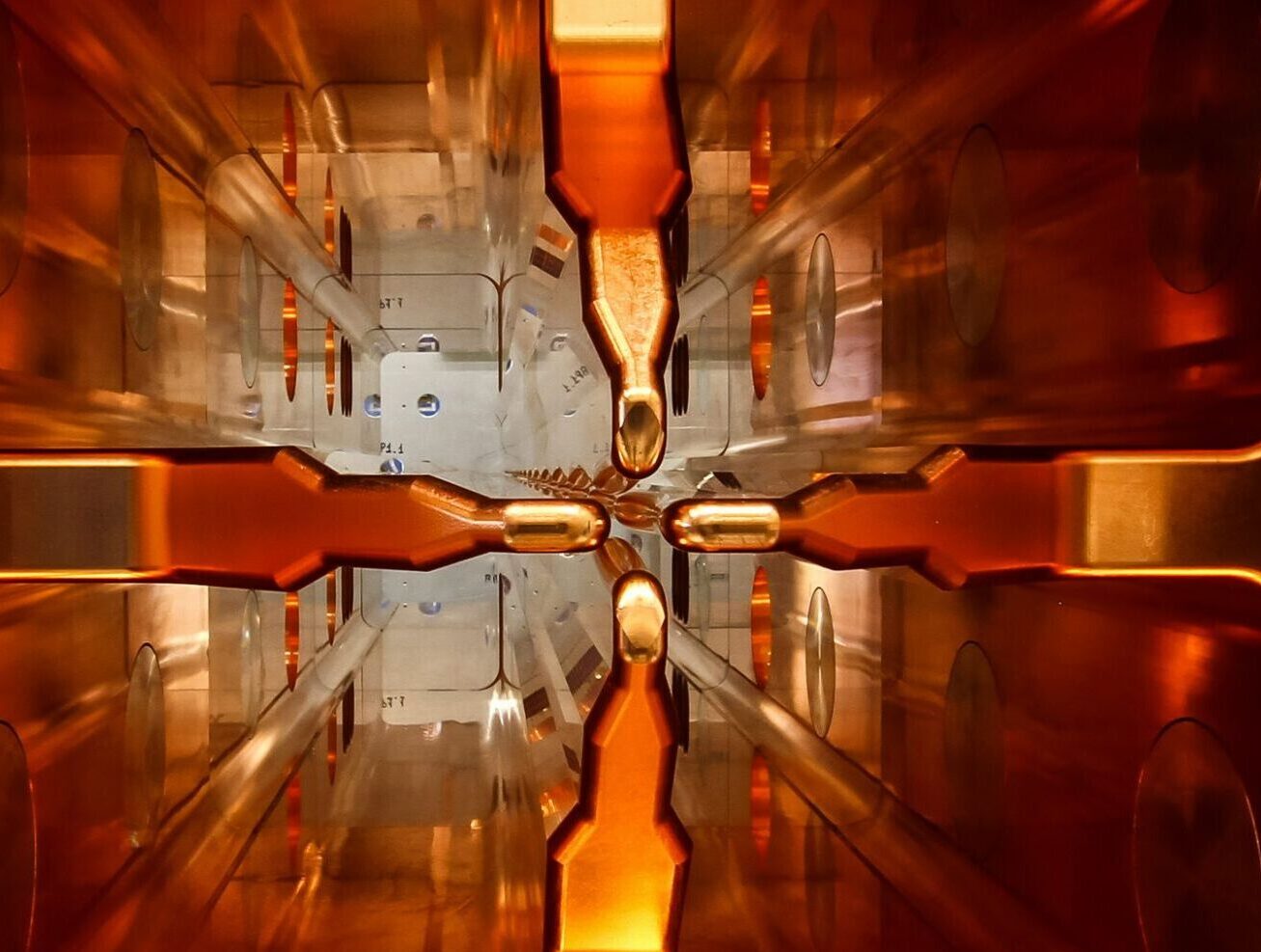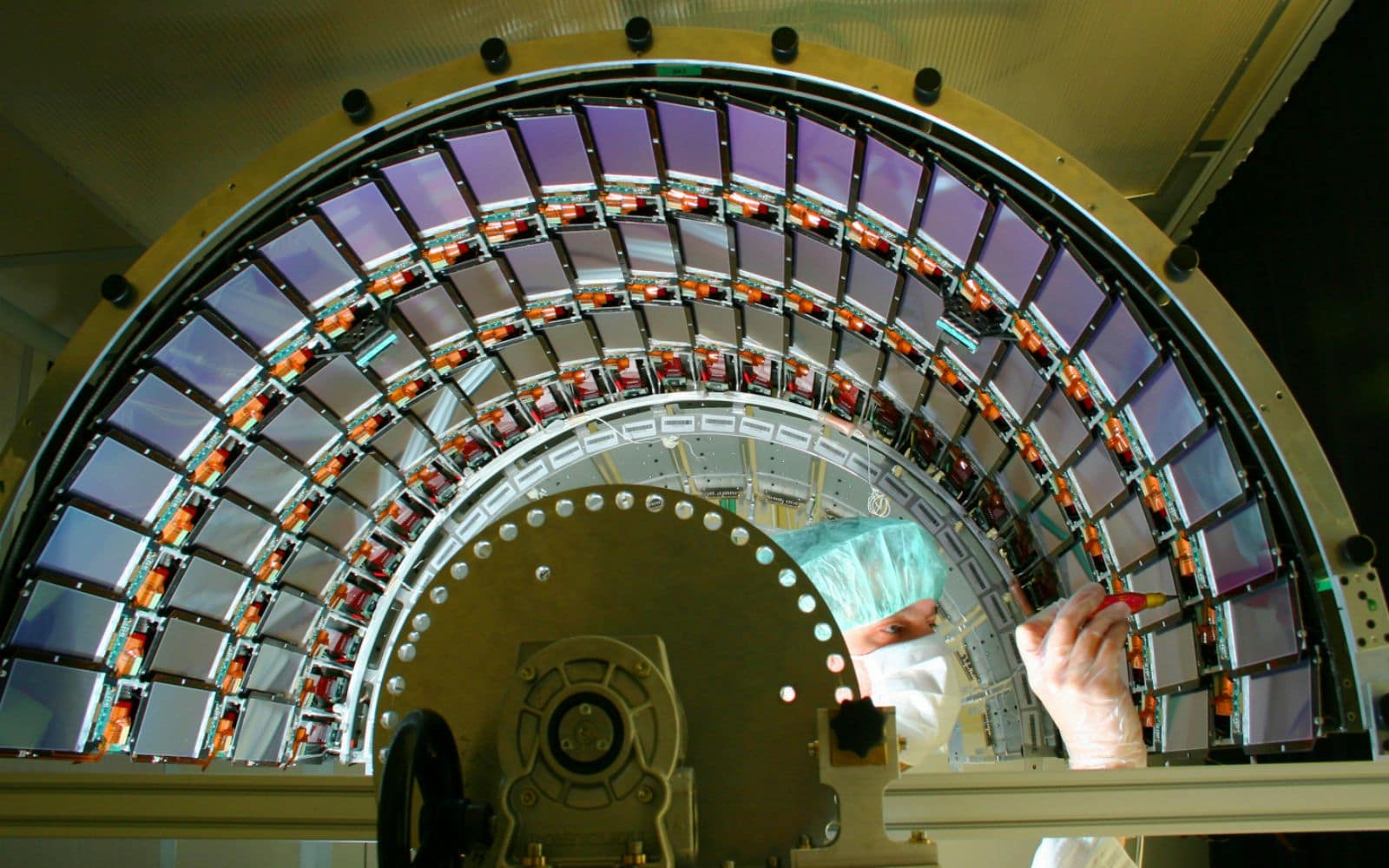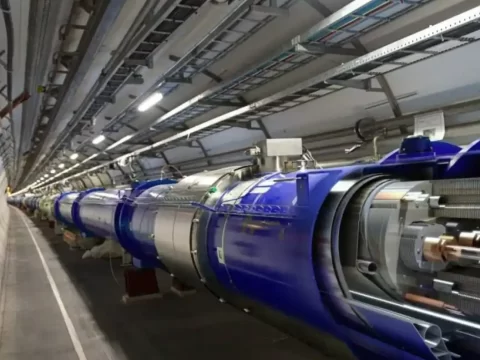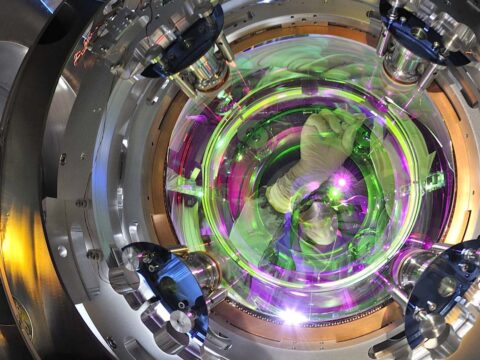In recent decades, numerous cutting-edge technologies for particle physics experiments, in particular the LHC accelerator, have been developed and refined with an essential contribution from Italy and INFN. These technologies range from magnetic superconductors, kept at a temperature a little above absolute zero, which are needed to maintain the particles along a circular trajectory by minimising energy dispersion, to the so-called “resonant cavities”. These cavities are indispensable for accelerating charged particles while keeping them at their characteristic resonance frequency, passing through collimators (used to focus the particle beams and protect the accelerator from energy losses) and particle injection and extraction systems, which are essential for ensuring the precision and efficiency of the experiments.
Detectors used in particle physics experiments may also rely on sophisticated technologies, often developed ad hoc.



